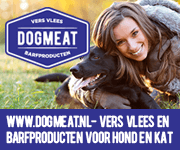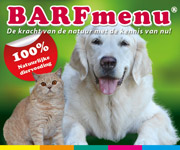Overview:
> Ingredients in some pet foods may cause an allergic reaction in
> hypersensitive cats and dogs. Reactions are characterized by itching and
> gastrointestinal disorders, and are usually responses to a protein or
> carbohydrate source in the diet. Food allergies are the third most
> common cause of itching, and account for about 10 to 15 percent of all
> allergic skin diseases in canines.
>
> Unlike animals with seasonal inhalant allergies, animals with food
> allergies tend to itch year round, and do not experience much relief
> from anti-itching medications. Therefore, it is essential to identify
> and remove the type of food that is stimulating the allergic response.
>
> Some animals will have other allergies concurrently, such as fleabite
> hypersensitivity and inhalant allergies, which have severe symptoms when
> they are not controlled.
>
> Clinical Signs:
> The only consistent sign of a food allergy is pruritus, or intense
> itching, which typically continues throughout the year and fails to
> respond well to corticosteroid treatments. Various skin lesions may also
> occur, but there is no characteristic pattern of lesions associated with
> food hypersensitivity. The ears, axillae--hollow areas under the front
> leg at the shoulder, groin, and feet--are affected more commonly than
> other body parts. Food allergic dogs commonly present with ear
> infections in both ears. The clinical signs of food allergies in cats
> are more variable than in dogs. Cats may have miliary dermatitis, raised
> bumps with bloody scabs, or eosinophilic granulomas, which look like
> elevated, open sores on the skin. Vomiting, diarrhea, and more frequent
> but formed bowel movements can be noted in some cases.
>
> Description:
> A food allergy is an allergic reaction to a substance within an animal's
> diet. Generally, the allergen is a protein or carbohydrate source. Food
> allergy is strongly suspected if the first signs of itching start before
> the dog is six months of age or older than six years. Animals can have
> more than one type of food allergy.
>
> The exact mechanism of the disease is not completely understood. Food
> allergies can affect the skin by causing itching and sometimes skin
> lesions. The ears, feet, the hollow area under the front leg at the
> shoulder, and groin are affected most commonly, although any part of the
> skin can itch. The gastrointestinal tract may react to the allergens as
> well; vomiting, diarrhea, and an increased number of normal bowel
> movements per day are typical symptoms.
>
> An elimination diet is fed exclusively to the animal in order to
> diagnose definitively the food allergy. Food trials are performed to
> determine the allergen or multiple allergens causing the animal's
> reaction, so that the veterinarian can prescribe a tolerable diet. Some
> animals may develop new allergies with time, but their diet can be
> reformulated as necessary.
>
> Elimination Diet
>
> The best tool for definitively diagnosing food allergy is a food
> elimination diet, selected to contain a single protein and carbohydrate
> source to which that the animal has not been previously exposed. The
> special diet must be fed exclusively for a minimum of 13 weeks. If they
> have a food allergy, most animals will begin to show signs of
> improvement within four weeks of the diet, but will require feeding of
> the elimination diet for a longer time in order to eliminate symptoms.
> Following the elimination diet, the original food is fed to the animal
> to confirm that it does incite an allergic reaction. If the animal is
> allergic to it, the return of clinical signs will occur within 10 days
> of restarting the original diet.
>
> Once the food allergy has been established, the exact allergen is
> investigated by placing the animal on the elimination diet until it is
> free of allergic symptoms. Subsequently, single food ingredients are
> added to the elimination diet and the animal is assessed for an allergic
> reaction. This process is repeated for each ingredient. Commonly
> suspected allergens include beef, chicken, fish, pork, and lamb meats;
> eggs and dairy products; and carbohydrate sources such as corn, wheat,
> soybeans, rice, and potatoes.
>
> Hope this helps ... its pretty simple!
>
> Cheers!
> Brenda-List Owner RawDogCanada
> The Urban Carnivore
> www.urbancarnivore.com






